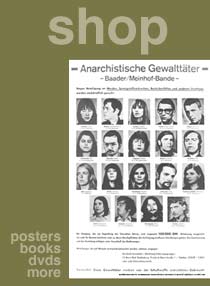"Generations of the RAF "
Depending on the year that you are studying, the members of the Red Army Faction are often described as "the first generation of the RAF," or the "second generation of the RAF," and so on.
There are two different meanings for this talk of RAF "generations." The first, and less prominent meaning, is articulated by filmmaker Rainer Werner Fassbinder in his 1978 film "Die Dritte Generation" ("The Third Generation"). For the definition proposed by that film, the German terrorist movement was divided into three generations. The first generation was the student movement of 1968, which proposed radical action. The second generation was the young radicals such as Ulrike Meinhof and Andreas Baader, who took the theories of the student movement and began waging a Revolutionary war. The third generation, as fleshed out by Fassbinder on the screen, was essentially bored young bourgeois Germans who turned to terrorism for kicks. Though it was only partially borne out in reality, this theory was reasonably well accepted at the time, often because it allowed guilty liberals a reason for condemning radical actions without seeming to sell out their own "radical" beliefs.
The second meaning is more common and more accurate. It is an attempt to put the RAF into a historical context by dividing up the RAF into distinct timeframes based on their leadership at a given time. By this definition, the period of 1970 to 1972 was the time of the first generation of the RAF, when the original leadership of Andreas Baader, Gudrun Ensslin, Ulrike Meinhof et al held sway. When former members of the Socialists Patient Collective (SPK) blew up the German Embassy in Stockholm, Sweden in 1975, the so-called "second generation" of the RAF was clearly defined. They were not the leaders of the RAF; the leaders continued to be original, "first generation" members that were still imprisoned and providing instructions through sympathetic lawyers. After the deaths Baader, Ensslin, and the rest of the core leaders, the second generation continued on without them. Many of these members were captured in the years leading up to the 1980s, and a third generation took hold. Some sources cite up to five distinct generations of the RAF from their beginnings until the RAF's demise in 1998, but truthfully beyond 1980 the membership of the RAF was too muddy and ill-defined to truly break it down into distinct groupings.


